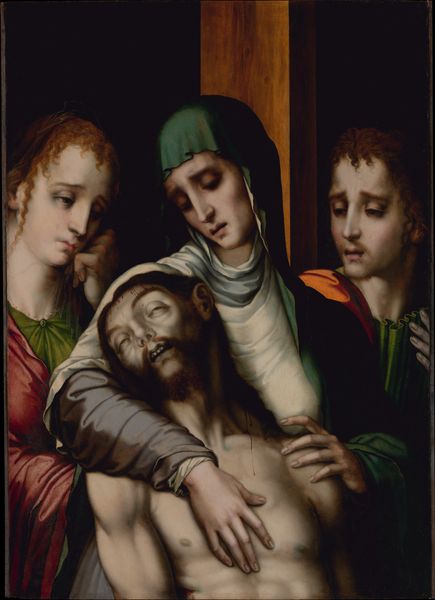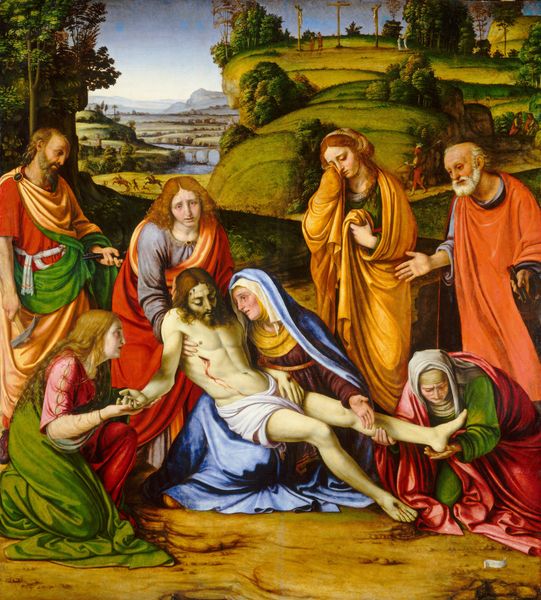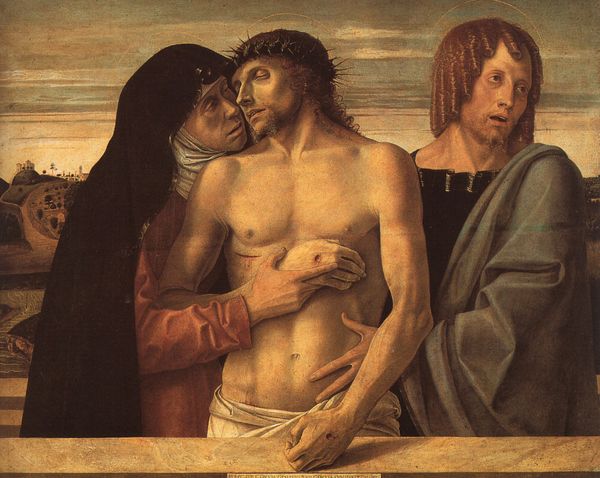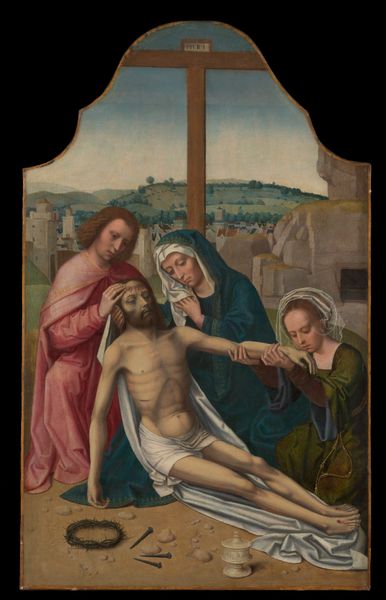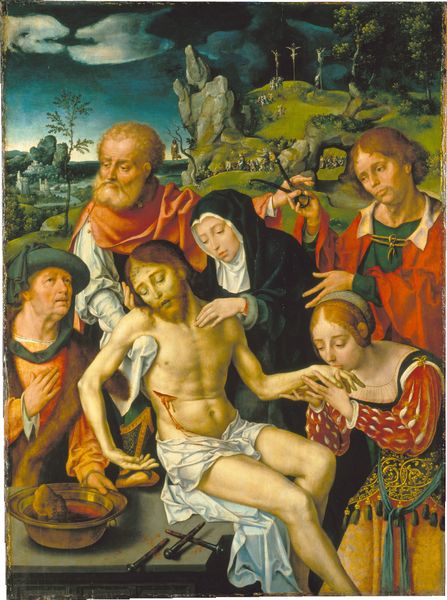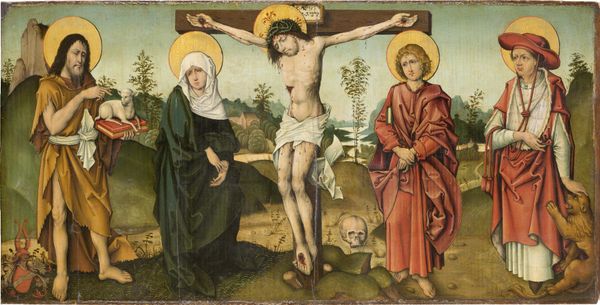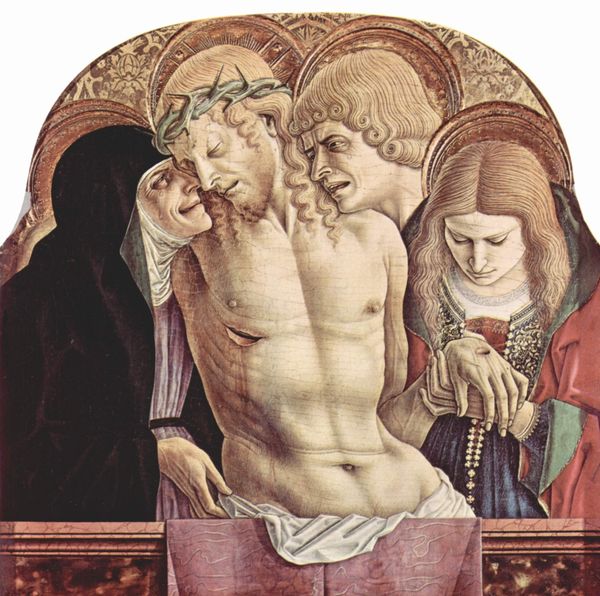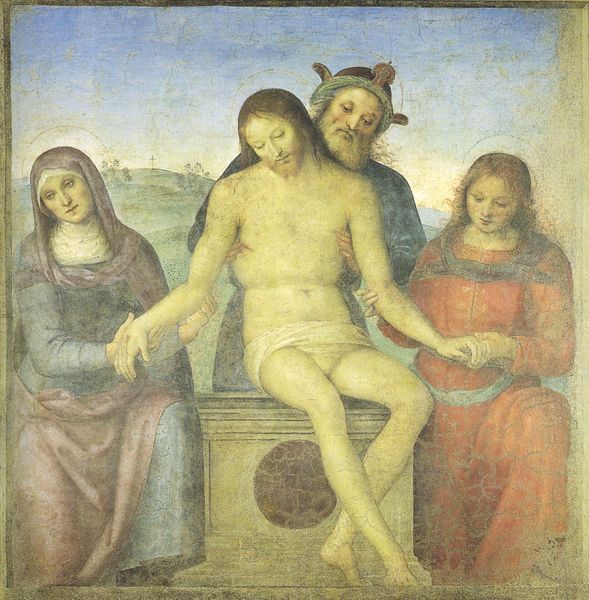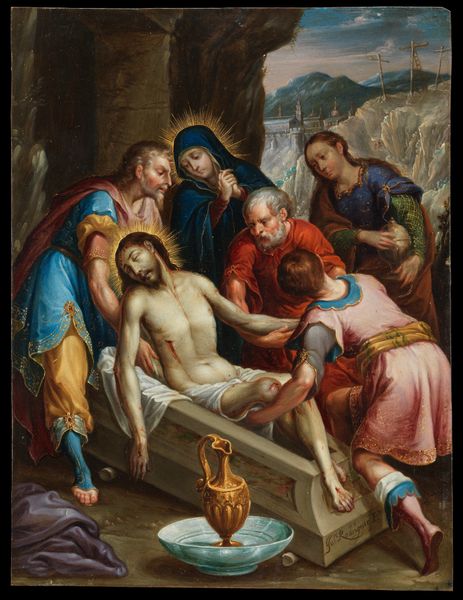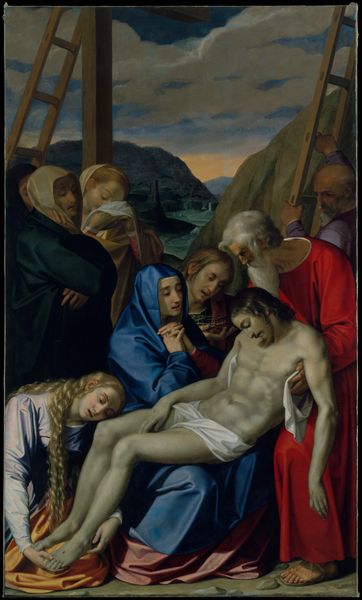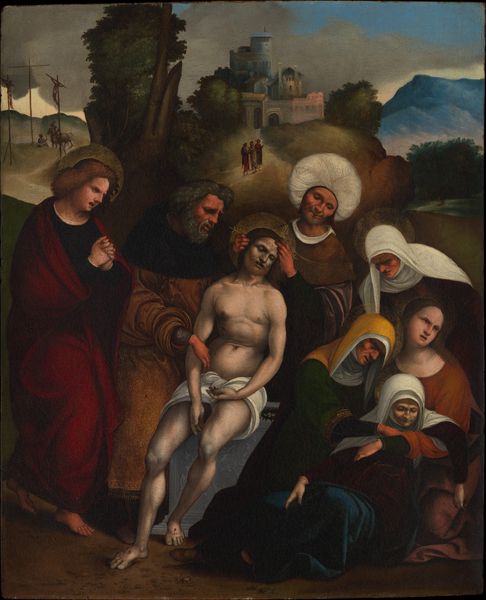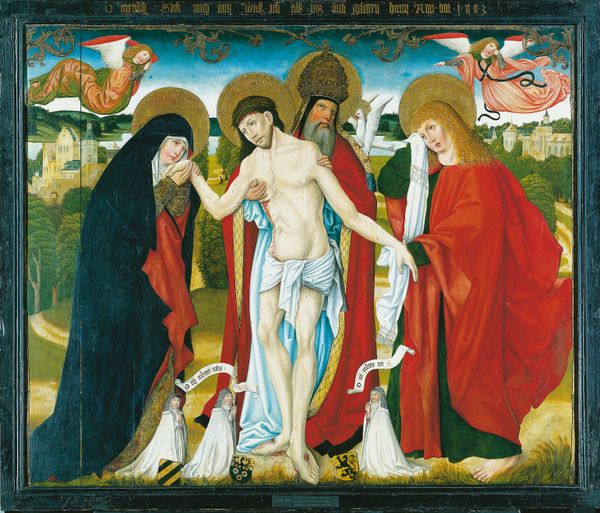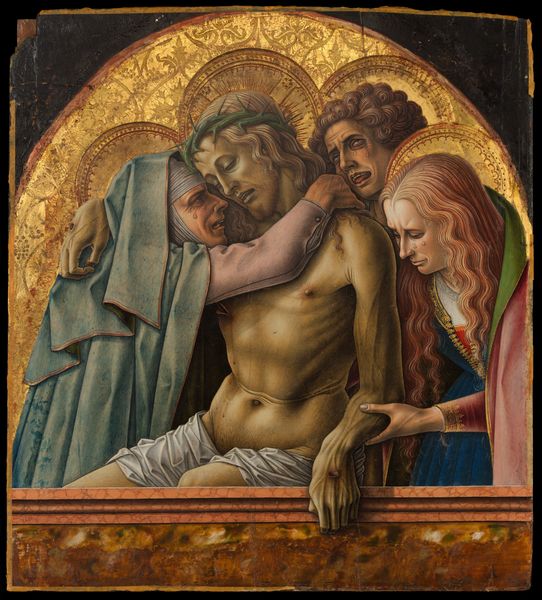
oil-paint, wood
#
oil-paint
#
figuration
#
oil painting
#
wood
#
history-painting
#
italian-renaissance
#
portrait art
Dimensions: 31 cm (height) x 25.4 cm (width) (Netto)
Curator: Looking at this, I feel like I’ve stumbled into someone's deepest sorrow, a shared grief held together with an almost tangible, fragile love. Editor: You've really nailed the atmosphere. What we're looking at here is Giovanni di Niccolò Mansueti's "Pietà with Virgin and St. John," painted with oil on wood sometime between 1485 and 1527. Currently, it resides here at the SMK, Statens Museum for Kunst. Immediately I am curious about the surface. What kind of wood did Mansueti use and how might its grain and texture have informed the painting process? Curator: It's remarkable how the landscape, almost dreamlike in its haziness, throws the stark tragedy in the foreground into sharper relief, don't you think? There's such a striking contrast between the raw emotion displayed in the figures and the gentle beauty of the world behind them. Like nature barely acknowledges the human drama unfolding. Editor: Yes, I see the landscape almost as a stage. But I'm struck by the figures' garments - that distinct Venetian palette of muted reds and deep blues. I'd love to know more about the specific pigments and dyeing techniques used. Were these local materials or were they traded commodities, connecting the work to wider economic networks? Curator: That's such a good question! The economy and art production… Thinking about that brings me back to the very delicate brushwork around Christ's face. It's as if Mansueti is conveying not just physical suffering, but also a profound inner peace. The painting invites us to meditate on faith, suffering, and, maybe most of all, love, in the face of profound loss. Editor: I see the artist making specific, skilled choices for emotional impact. It certainly speaks volumes about how skilled craftspeople were employed during the Italian Renaissance to give visual form to societal norms around devotion. I wonder, how much was dictated by patrons and religious doctrine, and how much room did the artist actually have for creative agency? Curator: It’s really a moving example of Renaissance art grappling with intensely personal and universal themes. Editor: Definitely food for thought as we reconsider the very hands-on and deeply embedded conditions in which great works are produced.
Comments
No comments
Be the first to comment and join the conversation on the ultimate creative platform.
